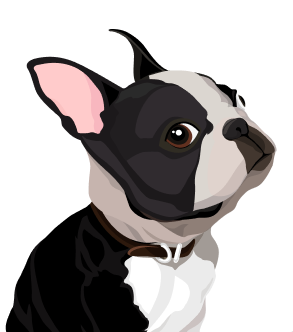Some say that all dogs are natural “babysitters” that adore caring for babies and never, ever do them any harm. However, this is a dangerous misconception. According to statistics, dogs bite children more often than they do adults. Of course, dogs never do this out of spite. They do so if they are not taught how to behave with a child, and if they are not provided with safe living conditions.
To make things go smoothly for everyone, it’s important to take some time to prepare your family dog for the arrival of your baby and introduce them to some safety precautions.
Preparing your dog for a new baby
If you properly prepare your family dog for the baby’s arrival, you’ll reduce the likelihood of problems and minimize stress for your pet.
- Think about how your dog’s life is going to change after your baby’s arrival. For example, if you have to rearrange your space or restrict your dog’s access to a room, introduce these changes at least three months before your baby’s arrival or even earlier. The same applies to changes in your daily routine or walking schedule. You can predict how your and your dog’s life will change when your baby comes, so get your dog used to these changes in advance.
- Teach your dog all the important commands such as “Sit,” “Come,” “Down,” and “Drop it” and practice some self-control exercises. You should always have an opportunity to stop and distract your dog if they try to play with the baby or grab their things.
- Work on your dog’s bad habits. If your dog is used to greeting you by jumping up on you, it may get very dangerous when you hold a baby in your arms. Teach your dog to meet you with all their paws on the ground. You should also work on resource guarding issues if there’s such a problem.
- Think in advance how you are going to introduce your dog to your baby.
How do you safely introduce your dog to your baby?
Here are simple and effective rules on how to safely introduce your dog to your baby.
- Ask someone to have a long and proper walk with your dog right before you arrive home with a baby. This will help to cope with your dog’s over-excitement.
- When a mother comes home with a baby, she should hand her baby over to someone and greet the dog. It is important to do it calmly, to keep the dog from becoming over-excited.
- As soon as the dog calms down, show them the baby and let them sniff their heel. Ideally, your dog should sniff the baby and calmly go back to their own stuff.
- Minimize changes in attention and show your dog that they are still loved. Don’t send them away from a room if they were previously allowed to be there. Don’t shout at your dog or punish them physically, especially in the presence of the baby. Keep in mind that meeting a baby is a crucial moment and it will have an impact on your dog’s and your child’s relationships.
- Stick to the daily schedule and rules that you’ve set a few months before the birth of your child. Arrival of a new, unfamiliar family member is a severe stress for your dog. Don’t contribute to their anxiety and do not provoke jealousy towards the child.
- Make sure that all associations with the baby are positive in your dog’s mind. When you feed the baby, you can feed your dog, too. You can also give your dog a treat after each interaction with the baby. Your dog should learn to love being near the baby because that’s when good things happen for them.
- As soon as your baby learns to crawl or walk, always supervise their interactions with the dog. Make sure that your child doesn’t corner your pet and that they communicate and play with them appropriately. Provide the dog with escape routes and a place where they can have some privacy. Your dog should know that they can leave your child any time they want. If your dog shows some signs of discomfort, let them go. If your dog wants to come back, don’t forbid them to do it.
- If your dog has a strong prey instinct and you see that they are tense, over-excited, and their gaze is constantly focused on your baby, leave your dog in a collar with a rope or leash tied to it for a few weeks. The leash or rope should be not less than one meter long. However, never leave your dog on a leash when they are left at home alone.
- If your dog guards their treats and toys and you didn’t previously eliminate their resource guarding problem, do not create conflict situations. Restrict your baby’s access to your dog’s toys and treats and don’t let them approach your dog while they are eating.
- Never leave the baby alone with the dog even for a second. All your dog’s interactions should be carefully supervised.
